
This is the first of two posts on scale-independent, experimental stratigraphic modeling using the Experimental EarthScape (XES) facility at St. Anthony Falls Laboratory, Minnesota University.
The focus of this and the companion article is a scale-independent model experiment. The experiment, documented by Martin et al., 2009, was an attempt to model the time and space attributes of discordant sequence-stratigraphic surfaces, such as onlap and downlap surfaces, under conditions of controlled base-level change. There are several excellent experimental facilities elsewhere that one could focus on, such as Eurotank at Utrecht University, but the XES was the first to incorporate differential subsidence of its basin floor. The Martin et al., experiment is also typical of the sophistication now applied to physical stratigraphic modeling.
This post describes the experiment methods and boundary conditions; the companion article focuses on some of the experiment results. Images of the experiment were generously provided by Chris Paola (now emeritus professor at Minnesota University).
Preamble
Some of the earliest quantitative models of geological processes focused on rock deformation at crustal and local scales. Notable examples were the experiments conducted by James Hall (1815), Henry Caddell (1889), and Bailey Willis (1894). With increasing experimental sophistication came the recognition that model outcomes were strongly dependent on the scaling attributes of materials and processes, for example material shear strength and viscosity (e.g., M. King Hubert 1934). The application of scaling laws based on dimensional analysis for these types of models has been fairly successful over the past few decades.
Quantitative sedimentary models are also scaled-down versions of real-world geologic phenomena. The application of scaling laws and dimensional analysis has been applied with varying degrees of success to these models, for example to experimental turbidity currents and pyroclastic density currents (e.g., Kavanagh et al., 2018, OA).
However, modeling sedimentary systems dominated by bedload transport of materials presents additional problems. It is next to impossible to scale grain size (how does one scale-down sand sized particles by factors of 106?). Likewise, the fluids involved in bedload processes are invariably water or air for which there are no suitable analogues.
An alternative approach to these scaling problems is to consider quantitative stratigraphic models as bona fide systems in themselves – systems in which there are similarities with real world processes and stratigraphic-sedimentologic responses. This approach has been described eloquently in several papers by Chris Paola and colleagues (Paola et al., 2009, 2011) who argue that there is frequently a “remarkable” similarity between models and large-scale depositional systems in terms of depositional process and stratigraphic architecture, regardless of whatever scaling attributes are applied. These authors maintain that this degree of congruence can provide real insight into how these systems form.
Experimental EarthScape facility (XES)
Descriptions of the model basin mechanics are provided by Heller et al., (2001) and Paola et al., (2001, 2009 op.cit.). The experimental basin is 13 m long by 6.5 m wide, bound by fixed walls and a movable basin floor constructed from a honeycomb array of 432 hexagonal, cone-shaped cells. The top of each cell can be adjusted independently to simulate basin subsidence; the maximum possible accommodation space produced by subsidence is 1.3 m. Water and sediment can be added from any point along the basin margins.

Basin floor subsidence is produced not by moving the cells themselves, but by covering the cells with a layer of well-sorted pea gravel, covering the gravel with a flexible rubber membrane (that becomes the basin floor), and then selectively removing gravel from the base of each inverted cone. Gravel is removed from the cones by injecting a timed, high-pressure pulse of water; each pulse removes enough gravel to create 0.12 mm of subsidence. Slopes of 60o between adjacent cells are possible. Differential subsidence can be simulated by varying gravel withdrawals across the basin. The experimental stratigraphy accumulates on top of the rubber membrane.
Designing the experiment
Boundary conditions
Evolving stratigraphies in natural depositional systems depend on the simultaneous interactions among many variables, such as:
- Sediment grain-size distribution and the hydraulics of fluid flow.
- Sediment supply and distribution (that also depend on rock type, landscapes and drainage basin morphology, climate, weathering).
- Sediment cohesiveness.
- The flow medium (air, water, sediment-water mixtures).
- Fluid flow dynamics (subcritical or supercritical, turbulent or laminar, unidirectional or bidirectional currents, gravity waves).
- Changing base-level and accommodation space, that also depend on basin-floor subsidence or uplift, changing water volumes (eustasy, steric influences) and how these variables interact with sediment supply.
- The direct and indirect involvement of biological systems (e.g., sediment binders, rigid buildups).
Deciphering the relative importance of any particular variable is one of the more difficult (some might say impossible) tasks in any sedimentological-stratigraphic investigation. Ideally, we would like to apply constant values to each variable so that we could evaluate the relative importance of any other variable. This is not possible in natural systems, but it is possible in physical stratigraphic models.
Martin et al., (op. cit.) applied the following boundary conditions to their XES experiment – see their paper for details:
- The physical walls of the tank are essentially no-flow boundaries; they can redirect flow and interfere with the normal sediment distribution. The active basin floor cells in this experiment (108 cells) were confined to a narrow strip to avoid side-wall interference (about 3 m wide – y direction; and 5.72 m long – x direction – see the diagram above). The prograding delta toe was also kept clear of the tank distal-end wall.
- Basin floor subsidence (z direction) was varied along the length of the basin such that total accommodation at the conclusion of the experiment was a maximum 1.3 m at x = 4.2 m, and a minimum at the shoreward end of the basin. The actual subsidence rate for any cell along the dip line was constant for the duration of the experiment; the maximum rate at 4.2 m along the dip line was 3.71 mm/hr.
- Sediment and water were fed at constant rates through a pipe at the ‘shoreward’ end of the tank. Sediment grain size and composition (silica sand, anthracite coal, and small amounts of kaolinite) were also constant for the duration; the added clay provided stability of the deposits during sectioning.
- Base level (the water level in the tank – serving as sea level or lake level) was the only variable that was changed systematically during the experiment. Base level was controlled by a small, external, water-filled header tank that could be raised or lowered vertically (the small tank basically acted as a constant hydraulic head). The header tank was connected to the main tank by a siphon. In this way, the water level in the main experiment tank could be raised, lowered, or held constant. Base level and subsidence curves are summarized in the diagrams below.
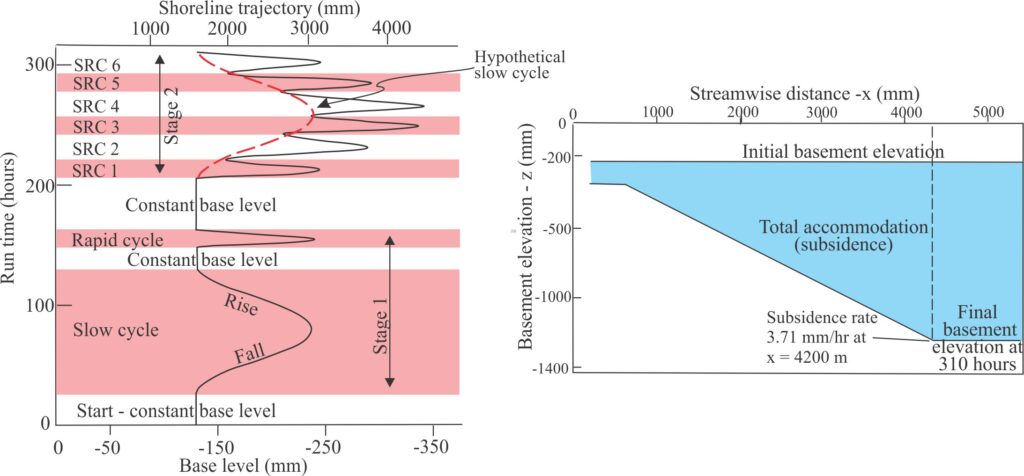
Imposed base level cycles
Base level cycles were imposed on the depositional system in two stages. For each cycle, the rate of base level fall was the same as the base level rise. The rapid versus slow cycles were imposed to test the stratigraphic response to long versus short time-frames in which base levels change. For stage 1, the cyclical change was continuous and relatively slow; the total base level displacement was 110 mm. Stage 2 was a similarly slow grand cycle upon which 6 higher-order cycles were superimposed; the total base level displacement was 220 mm. The cycle hierarchy in stage 2 is analogous to that observed in many ancient depositional systems.
Conditions not applied to the model
- No wave generation. Without waves there was no wave-base, and therefore no wave modification of the shoreface and foreshore. This means that certain stratigraphic discordances, such as ravinement surfaces or regressive surfaces of marine erosion were not incorporated into the model.
- No redistribution of sediment mass by simulated tidal or geostrophic currents.
Recording the experiment
The ability to digitally record an experiment is one of the major advances in experimental methodology. In this experiment, the surface topography was scanned at regular intervals, providing a quasi-continuous, digital record of the morphological changes in subaerial channels (channel migration, avulsion, or incision) within-channel bars and chutes, and importantly, the advance and retreat of the shoreline.
Topographic relief over the subaerial component of the system was measured using laser technology. The submerged delta slope and toe topography were measured using an ultrasonic sonar transducer. Changes in topographic relief also reflect changes in the distribution of sediment mass.
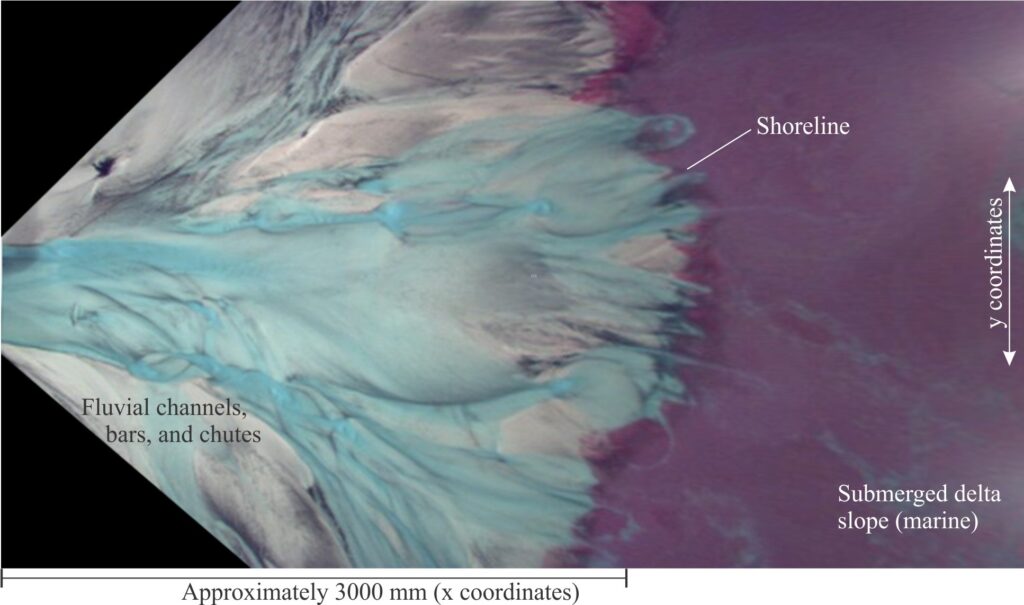
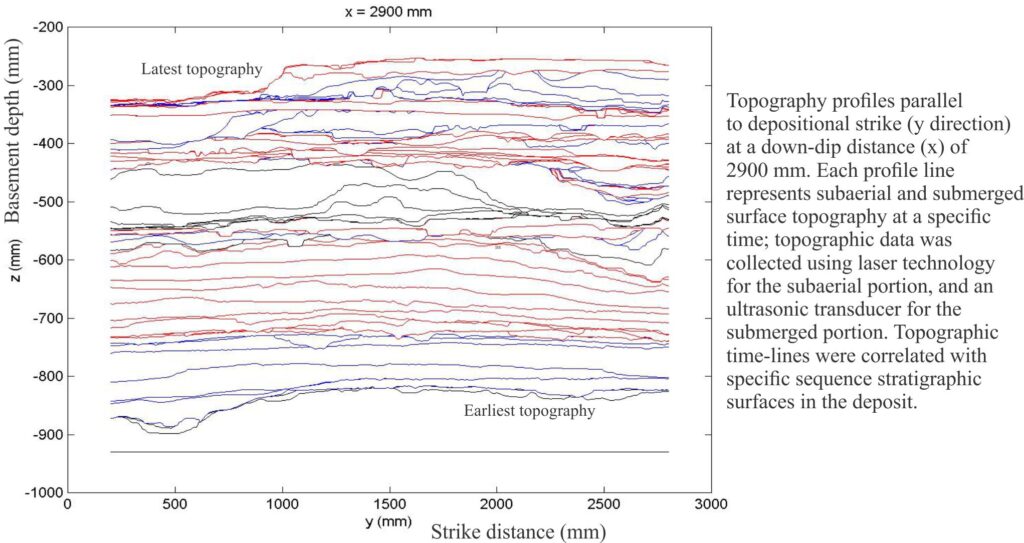
Data recorded in this way is amenable to spatial analysis and mapping of specific topographic surfaces. The data were incorporated into a series of topography maps and digital elevation models (DEMs).
At the completion of the experiment, the entire deposit was serially sectioned longitudinally (parallel to dip) at one-centimetre intervals and photographed. These records provided a reliable comparison between the main architectural elements of the created stratigraphy (primarily large-scale bedforms and stratigraphic discordances) and the evolution of the fluvial and deltaic topography. Where possible, topographic profiles and DEMs were linked to the stratigraphic surfaces identified in the 2D dip sections to evaluate their chronostratigraphic significance.
An image of the dip section at y = 1520 mm is shown at the top of this post – the section is located about half-way across the model domain.
Other posts in the Geological Modeling series
Geological models: An introduction
Model dimensions and dimensional analysis
Analogue models of faults: scaling the materials
Analogue models of orogenic wedges
Self-organization, autocyclicity, and the rock record
Experiments with turbidity currents – some historical context
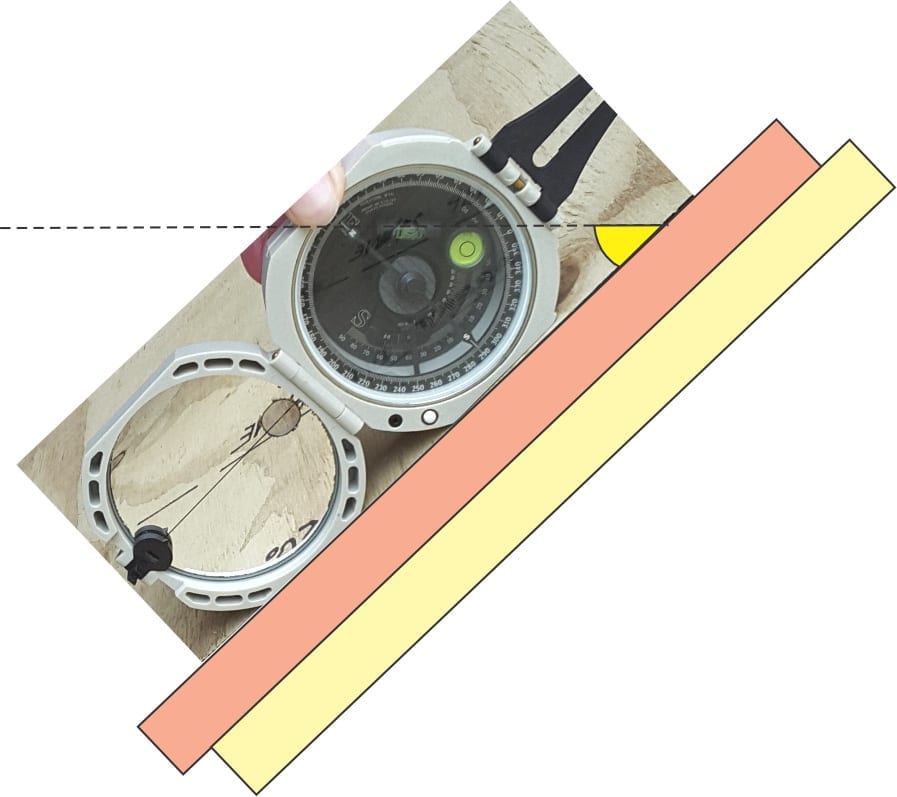
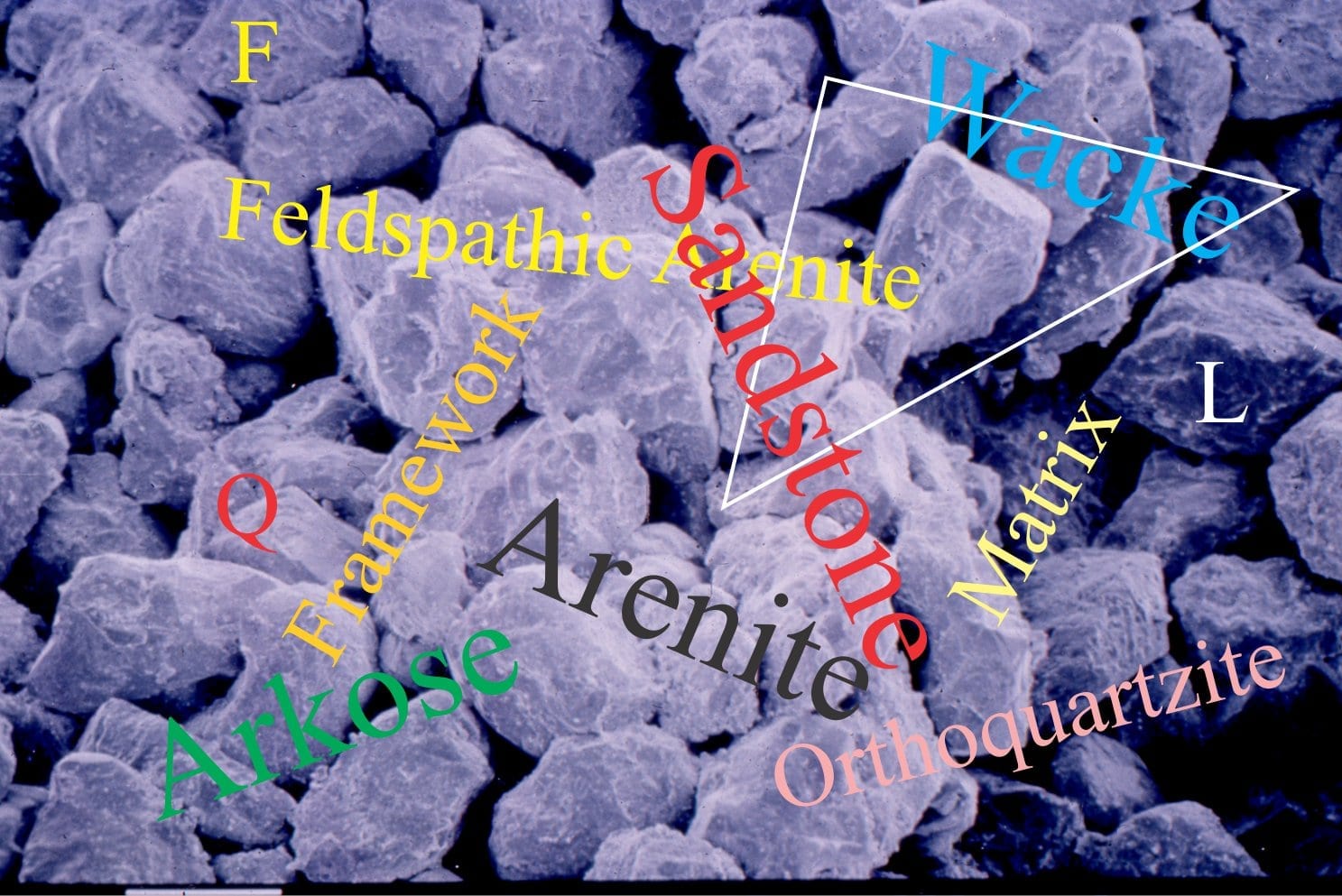


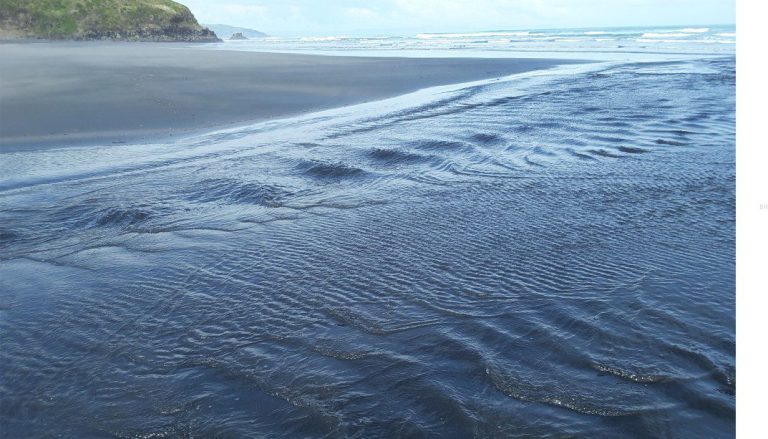


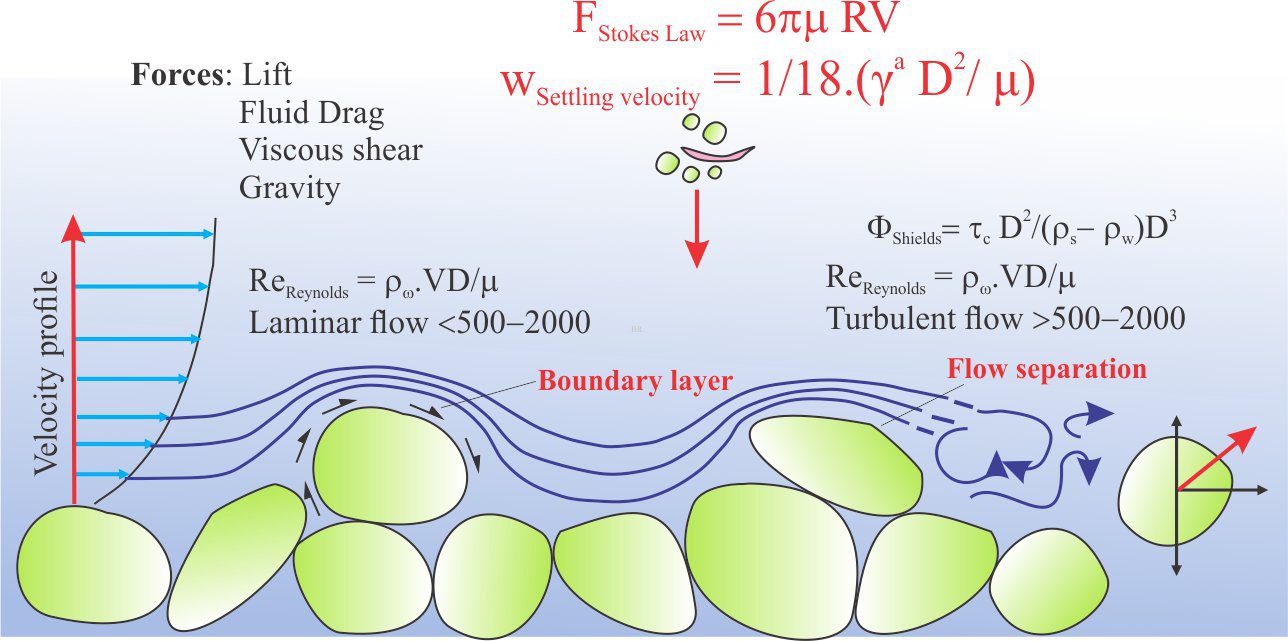

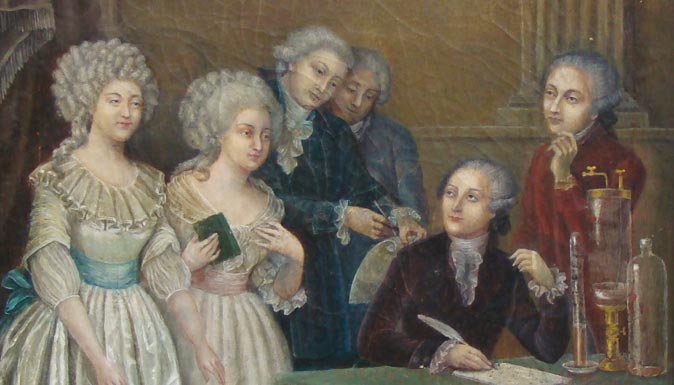

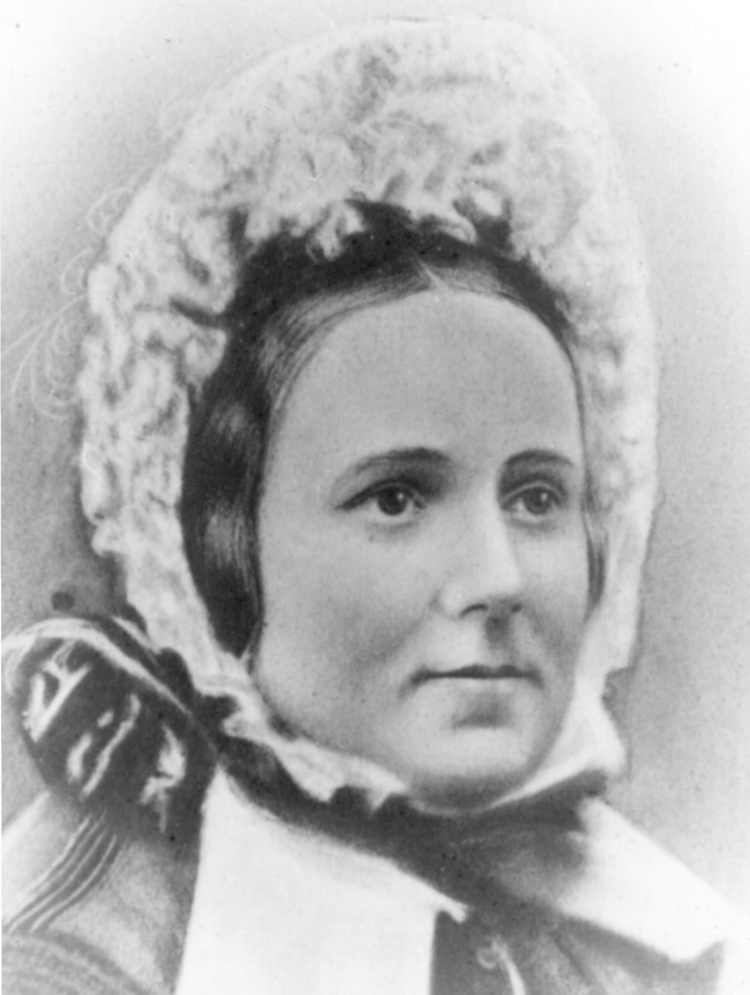
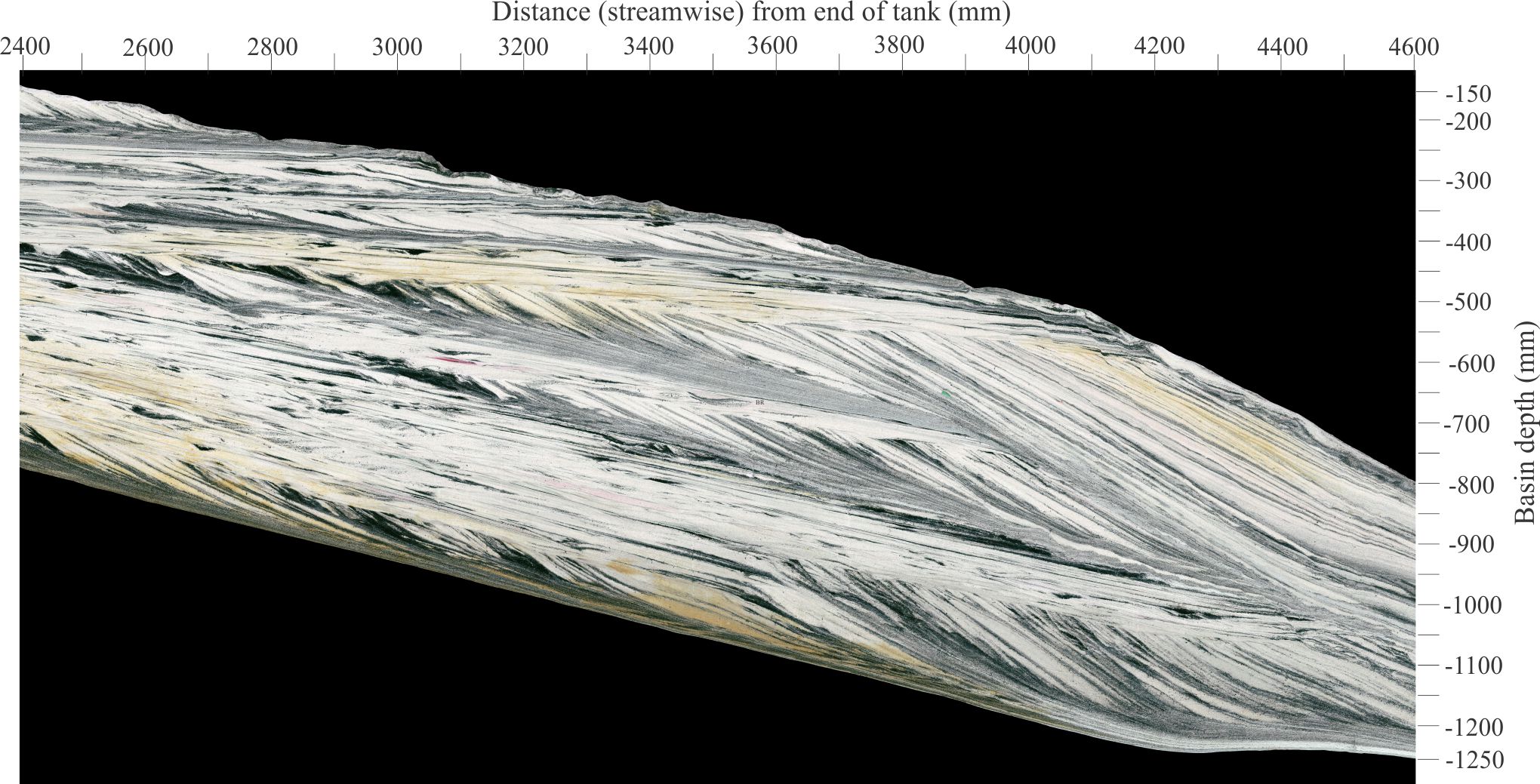

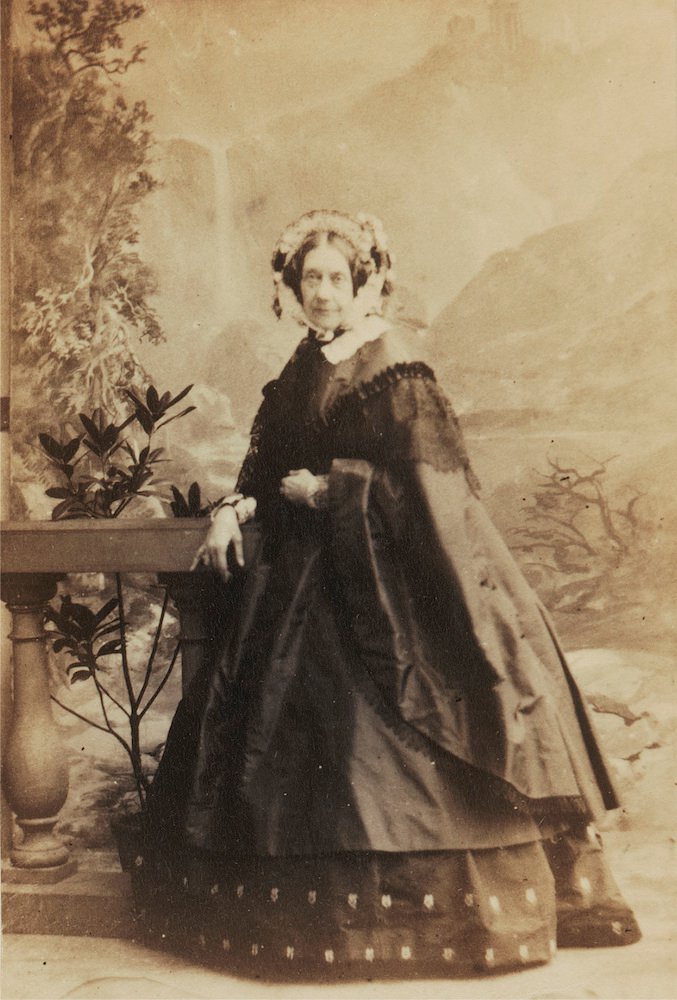

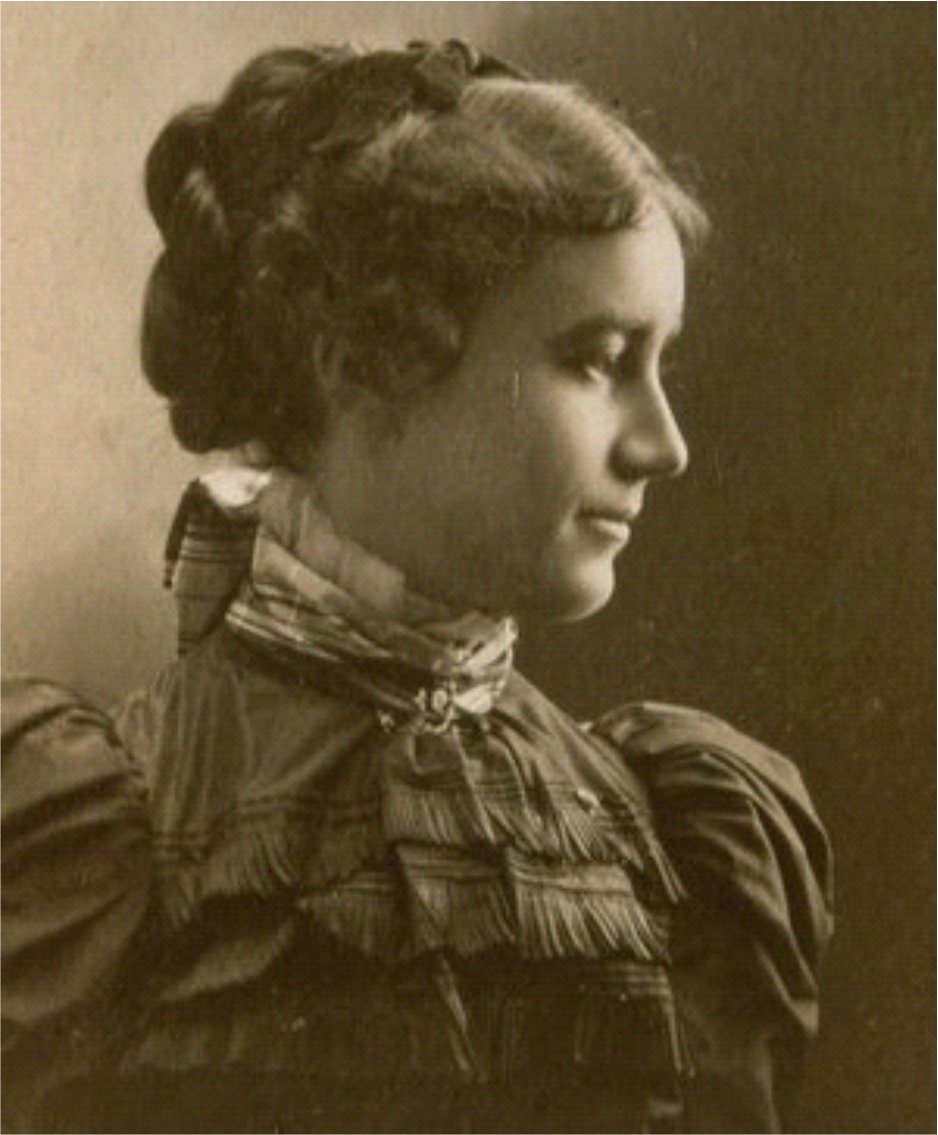

1 thought on “Experimental sequence stratigraphy: model attributes”
It is actually a nice and useful piece of information. I’m happy
that you just shared this useful info with us.
Please stay us up to date like this. Thanks for sharing.